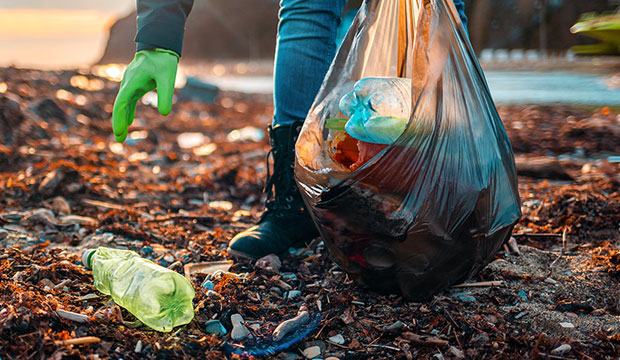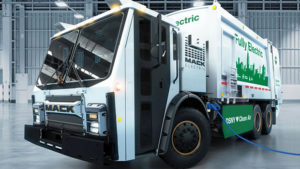The current use of plastics is not sustainable due to the tremendous amount of discarded plastic waste accumulating as debris in landfills, oceans and other natural habits across the world.
Mechanical recycling, which as related to plastics is also called back-to-plastics recycling, has been used since the 1970s. However, the quantities of recycled plastics vary geographically.
Lately there has been a noticeable uptick in buzz around chemical recycling technology as a potential solution to the plastics crisis. Meanwhile, critics point to drawbacks which include environmental health risks, inefficiency in terms of the amount of waste plastic that becomes new plastic, and high costs.
TechNewsWorld discussed the issues with plastics industry experts to examine whether chemical recycling technology has the potential to fix the plastic pollution problem.
Sustainability Strategies
Environmentalists and proponents of strong sustainability all agree with the need to reduce or eliminate the accumulation of plastic waste. However, this is not a simple task.
While most plastics recycling in the United States takes place through the mechanical approach, solid industrial wastes are taken to landfill sites, Jeff Brown, material science engineer and quality and compliance officer at plastics manufacturing company Premier Plastics, told TechNewsWorld.
The U.S. has a sustainability plan mandating much of the nationwide recycling strategy and procedures; and at the local level, including Brown’s hometown Salt Lake City, most municipalities have set up regional goals to guide sustainable development, he explained.
Plastic wastes are addressed in a number of ways in the U.S. Prevention (reduction of waste) and reuse (recycling) are preferred over other, less Earth-friendly methods like disposal in landfills.
Landfilling is only allowed to handle wastes that cannot be treated in any other way, such as highly-contaminated materials. Due to this restriction, the majority of plastic waste is sent for mechanical recycling.
“Mechanical recycling is good because it places less burden on the environment than using new plastics does. Recycling plastics saves materials, reduces water, saves energy, and so on,” Chris DeArmitt, Ph.D., plastics materials expert and president of Phantom Plastics, told TechNewsWorld.
This indicates how legislative intervention plays a crucial role in influencing the circularity of material and in transitions toward sustainable solutions.
As the demand for recycled plastics is rapidly increasing, a rising number of commitments by retailers, brands, and other stakeholders are working on closing the loop on plastics.
Consumer product companies like Danone, Pepsi, Procter & Gamble, and Unilever are among those that have created ambitious goals to ensure that all plastic packaging is compostable, recyclable and reusable.
“Walmart has a huge sustainability effort but doesn’t put the effort directly into chemical recycling, so it’s an indirect link. But many other companies are developing their own sustainability plans that include the use of sustainable packaging,” said Brown.
Mechanical vs. Chemical Recycling
Mechanical recycling has been the best way to capture the value of plastic waste by turning it into other useful applications. However, the mechanical approach has its limitations. Currently in the U.S. only 13 percent of plastic packaging is recycled, a further 17 percent is incinerated, and 70 percent is landfilled.
“Normal mechanical recycling is greenest, proven, and works on 90 percent of plastics. Chemical recycling might make sense at some point for the other 10 percent,” according to DeArmitt.
Chemical recycling provides sustainable solutions to overcome the current challenges of mechanical recycling processes by enabling the recycling of a wider variety of plastic wastes than conventional mechanical recycling. Through chemical recycling, mixed, colored, and multilayer-material plastic wastes can be liquefied in a thermochemical liquefaction process, which transforms them into a material similar to crude oil.
“That’s where chemical recycling comes in — they’re actually using a chemical process to separate different components. So that’s an expensive recycling process — and it works — but it’s very industrial and very expensive, which is why most companies don’t go for it,” explained Brown.
The expense issue is connected to supply and demand for recycled chemical plastics. In other words, there is still low demand for recycled chemical plastics.
“If I were a packaging manufacturer, I would buy cheaper virgin plastic rather than the more expensive, chemically recycled, plastic. Because that’s how business works. Businesses are looking to maximize profits and decrease expenses. You don’t want to buy more expensive [materials] unless the consumer demands it,” he reasoned.
Brown further identified that chemical recycling is not prioritized in the region. “I don’t know how many chemical recycling plants there are in the United States. But I don’t think there are very many. So, it’s a) not available, and b) very expensive.”
The local waste-handling strategy has not accounted for the chemical process as an option for plastic recycling.
Tapping Full Potential
With its ability to provide a range of options that are not available in current mechanical material recycling pathways, chemical recycling technology presents potentially innovative ways to deal with post-consumer wastes.
However, the technology is early-stage development — applications of chemical recycling do not exist at large industrial scale. Only test projects exist. Developers therefore face challenges to prove their potential, especially in regard to how the technology can fundamentally change the lifecycle of plastics and increase the volume of recycled plastics significantly.
Despite being in early stages, Brown said that some enterprises such as BASF are doing research, developing, and in fact implementing chemical recycling technologies at small scale.
A lot of work is needed to scale up the technology to become more viable during the next decade.
“So as this goes, maybe 10 years from now this is going to be a little further along, there will be a little better consumer acceptance, and research is going to be a bit further along,” said Brown.
Public-Private Partnerships
The plastic industry is getting ready to embrace the technology and policies are falling into place. Ohio and Illinois have become the most recent states to pass laws making it easier to develop chemical recycling facilities, regulating them as recycling operations instead of waste processing plants.
Collaboration and innovation with chemical recycling is proving itself as a vital solution. Companies with chemical recycling expertise have no problem finding suitors. Industry heavyweights such as SABIC, BASF, Dow, and Neste are reaching out to specialized downstream partners to gain access to chemical recycling technologies and outputs to use in their European production facilities.
Brown says chemical companies should engage with governments and industry partners to promote these programs.
“They can lobby governments to pay incentives, mandate levels of recycling programs, and also fund research. I think that partnering at the government and industry levels are probably the biggest things that a company can do to pave the way to do chemical recycling,” he suggested.

















































